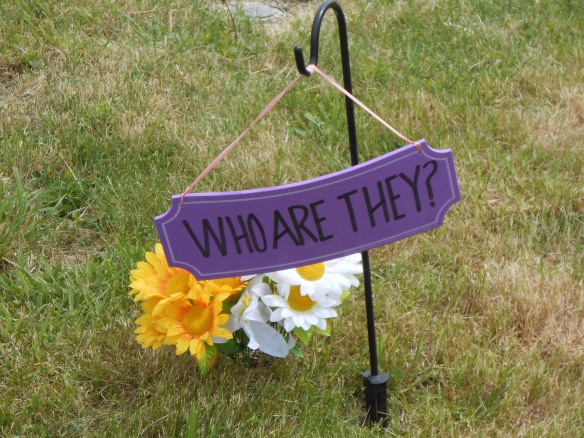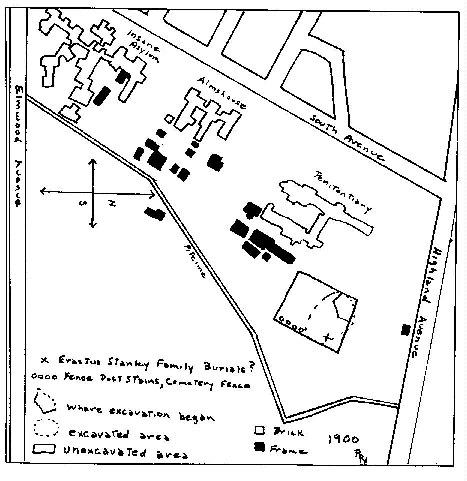The New York State Office of Mental Health put on a fabulous “show” at the Willard State Hospital Cemetery on Saturday, May 16, 2015, by allowing ONE man, Lawrence Mocha, an inmate and hospital grave digger, who died 47 years ago, to be remembered with a beautiful ceremony that included a plaque displaying HIS NAME, DATE OF BIRTH, DATE OF DEATH, AND LOCATION OF GRAVE! OH MY GOD! IS HELL FREEZING OVER?
Mr. Mocha was ONE OUT OF 5,776 buried at this cemetery. This ceremony was hosted by the Willard Cemetery Memorial Project. The only reason that the OMH let this ceremony take place was because they were humiliated by an article published in The New York Times by journalist, Dan Barry. Why wasn’t Mr. Barry fined $10,000 by the OMH as they so often threaten? Might they be afraid of The Times and its readership of 1 million people a day?
It has been my belief that the New York State Legislature should pass into law two bills:
- New York State needs a law that would release the names, dates of birth and death, and location of graves of ALL deceased patients of ALL 21 former New York State Hospitals and 5 Custodial Institutions which SHOULD BE AVAILABLE AND ACCESSABLE ON THE OMH Website as a searchable data base. All these cemeteries are INACTIVE! There is no reason why anyone has to wait 50 years to be remembered!
AND
- An additional law that would release to descendants the medical records and photographs of loved ones who were incarcerated at these institutions 50 years after the patients’ death with the same wording as provided by the new Federal HIPAA legislation of March 2013.
The New York State Office of Mental Health WILL NOT ALLOW the burial ledger of the Willard State Hospital or any New York State Hospital or Custodial Institution to be released to the public. The names of the deceased and the location of their graves must be made available to the public in order that people may find their ancestor, visit the grave, and purchase a headstone if they wish to do so. Withholding their names is unacceptable, dehumanizing, and insulting; it only serves to feed the stigma associated with mental illness. Many of these former patients died over one hundred years ago; they are not under the care of the Office of Mental Health or any government agency. It is important and necessary for a new law in order to restore the dignity and personhood of the THOUSANDS of people who were incarcerated and died at former New York State Hospitals (formerly Insane Asylums), and Custodial Institutions. When the bodies of the inmates/patients were not claimed by family members, they were buried in anonymous, unmarked graves on state owned and county cemeteries. They deserve to have their names remembered and available to the public in a searchable database located at The New York State Office of Mental Health Website.
The NYS Office of Mental Health always sites “Protected Health Information” for their reason as to why they cannot release patient names. Let’s start at the beginning by defining the following: What Is Personal Identifiable Information? AND, What Is Protected Health Information? If you take the time to read these two definitions, you will CLEARLY SEE THAT THESE LAWS AND PROVISIONS WERE WRITTEN FOR THE LIVING, NOT FOR THOSE WHO HAVE BEEN DEAD LONGER THAN 50 YEARS!!!! A BURIAL PERMIT, which can be obtained in every County Clerk’s Office in the State of New York, is not covered under any state or federal privacy law. Old Books, Burial Ledgers, and The United States Federal and State Censuses which are released after 70 years, are not covered under any law that I know of. Birth, Death, and Marriage Certificates can be obtained from the NYS Vital Records page. 145 years have passed since the first person was buried at the Willard Asylum in 1870. It is time to let those nameless souls rest in peace and be remembered!
Anyone can sit at the County Clerk’s Office and sort through all the records pertaining to any state hospital or custodial institution but the information contained in the burial ledgers would be much more accurate and less time consuming. An inscribed headstone or a name on a searchable database would not positively identify a specific individual UNLESS it stated the city, county, state, country of origin, parents, spouses, sibling names, etc. And even then, you would have to claim that person as your ancestor and notify the media that he or she was diagnosed with a mental illness in order for you and your family to be “stigmatized.” Come On! This Is The Twenty-First Century! Privacy ends at death and according to the new HIPAA Law, Confidentiality Of Medical Records only lasts for 50 years after death of an individual.
The real reason why the OMH does not want to publish this information is simple. They don’t want you to know how badly they’ve screwed up!
EXAMPLES:
I have been told over and over again that one of the cemeteries on the former KINGS PARK STATE HOSPITAL property is being used as a youth baseball field. This had to have been approved by the NYSOMH. As far as I know, the bodies were never moved. I wonder how the families of patients buried at this site would feel if they knew that their loved one’s grave was being disrespected in this way? If this information is incorrect, I apologize.
What about all the VETERANS from the Civil War, WWI, WWII, Korea, and Viet Nam that are buried in these former NYS Hospital Cemeteries. Don’t they have a right to be remembered with a marker?
The NAMES of deceased patients buried at the former BINGHAMTON STATE HOSPITAL Cemetery are already online in a searchable database. The burial ledger was found in the trash. AND, in 2014, Glass Photo Negatives of Patients were discovered in a pile of pigeon poop at Binghamton’s Historic Asylum. If these old photographs and burial ledgers are so important, then why were they found in the trash?
At the former MIDDLETOWN HOMEOPATHIC STATE HOSPITAL patient records were left in boxes which were photographed and put on the internet. Looks like the staff left in a hurry! These facilities closed in 1995.
Someone from the former GOWANDA STATE HOSPITAL gave the burial ledger to The Museum of disABILITY History for safe keeping. Thank God! The names are on display at the museum.
Why is the largest mental health facility in New York State the Prison at Riker’s Island?
If medical records for the recently departed are protected, then why was Sally Green’s Anonymous Burial and a detailed story printed all over the news in February 2012?
Lastly, and most importantly, The OMH would have to release 21 State Hospital and 5 Custodial Institution Burial Ledgers. Do they even have them?
The list of these former New York State Hospitals includes but is not limited to: Binghamton, Buffalo, Central Islip, Creedmoor, Dannemora, Edgewood, Gowanda, Hudson River, Kings Park, Long Island, Manhattan, Marcy, Matteawan, Middletown, Mohansic, Pilgrim, Rochester, St. Lawrence, Syracuse, Utica, and Willard.
The Feeble-Minded (Intellectual Disabilities) and Epileptic Custodial Institutions of New York includes but is not limited to: Craig Colony for Epileptics, Letchworth Village for Epileptics & Intellectually Disabled, Newark State School for Intellectually Disabled Women, Rome State School for Intellectually Disabled Adults & Children, and Syracuse State School for Intellectually Disabled Children.
Please check out and share the NAMES page.
More Reading:














